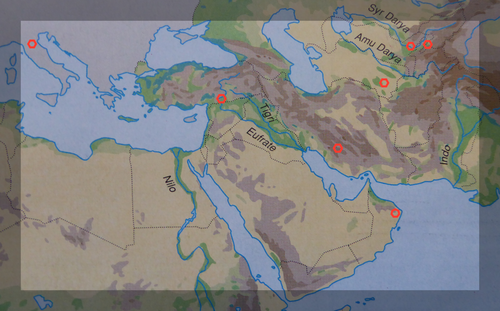Iranian-Italian conference presenting the contribution to the knowledge of the ancient East produced by the archaeological eld activities carried out by the Alma Mater Studiorum – University of Bologna in Turkey, Iran, Turkmenistan, Uzbekistan, Tajikistan, Oman, as well as by the Iranian archaeological research. e conference represents an important occasion not only of a combined illustration of the main results by the Oriental sector of the archaeological research of the University of Bologna, but also an occasion of debate on scienti c problems and investigation methods which Iranian and Italian archaeologist share in their eld work.
PROGRAMME
10.00
Introduction and opening greetings by Luigi Tomassini (Director, Department of Cultural Heritage), Lanfranco Gualtieri (President, Fondazione Flaminia), Pietro Basciano (President, Lighthouse-Group)
10:30
Nicolò Marchetti (University of Bologna)
New discoveries at Karkemish in South-East Turkey
11:30
Maurizio Cattani, Barbara Cerasetti (University of Bologna)
The Italian Archaeological Expedition in the alluvial fan of the Murghab River (Southern Turkmenistan): the excavation of the Bronze Age Site of Togolok 1
12:00
Simone Mantellini (University of Bologna)
The Uzbek-Italian Archaeological Expedition at Samarkand (Uzbekistan). Results and perspectives
15:00
Alireza Askari Chaverdi (Shiraz University)
Achaemenid archaeological research in Iran: problems and how to approach them
15:30
Antonio Panaino (University of Bologna)
The ethno-cultural heritage of the Yaghnob Valley (Tajikistan): the Italian experience
16:00
Maurizio Cattani (University of Bologna)
Prehistoric Arabia and the Italian Archaeological Expedition in the Sultanate of Oman
17:00
Fatemeh Farshi Jalali (Iranian Centre for Archaeological Research)
Obsidian studies in Iran: methods and problems
17:30
Pierfrancesco Callieri (University of Bologna)
Eleven years of collaboration between the University of Bologna and the Iranian Centre for Archaeological Research: results and perspectives
18:00 – 18:30
Discussion and conclusions
